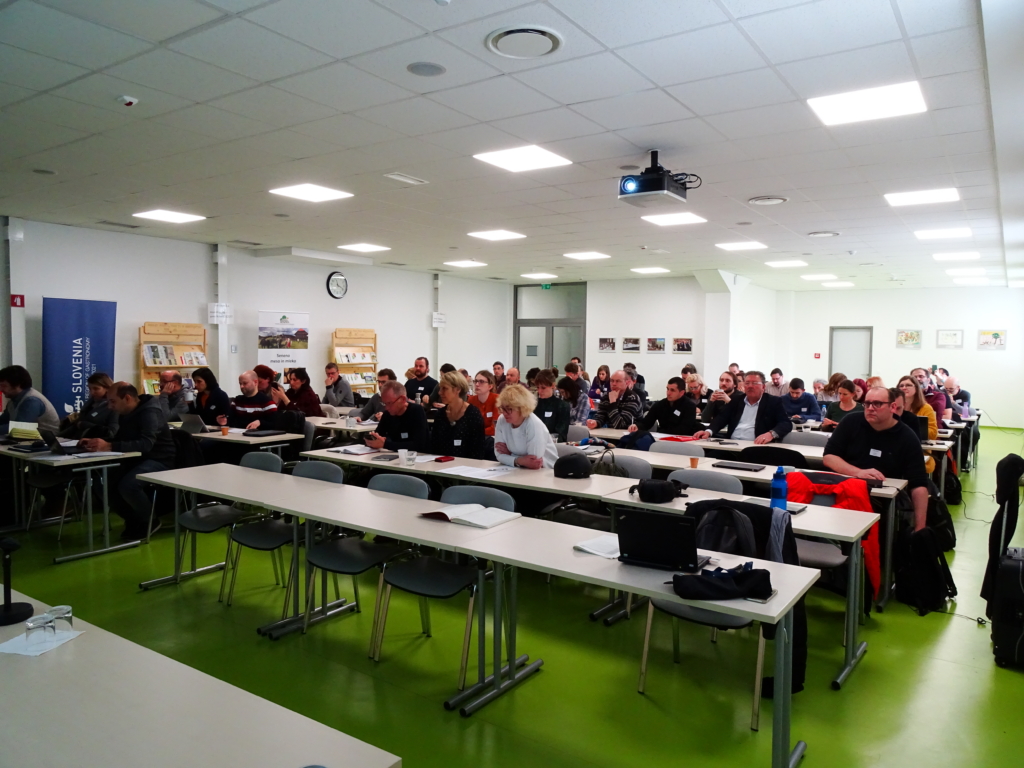To mark this year’s World Wetlands Day on 2 February, we highlight the success of the COST Action PEsticide RIsk AssessMent for Amphibians and Reptiles (PERIAMAR), which is dedicated to the risk assessment of pesticides on amphibians and reptiles, and conservation efforts for these species.
Historically, amphibians and reptiles have laboured under negative stereotypes, often due to legends and stories portraying them as malevolent and ugly creatures. These negative perceptions were reinforced by the association of snakes with the devil in Christian tradition. Fortunately, attitudes towards these animals have evolved over time, with a growing recognition of their roles in maintaining ecosystem balance, and as integral components of our natural heritage.

Despite these positive changes, environmental pollution has taken a toll, resulting in population declines and even extinction. To address these problems, PERIAMAR have worked to enhance the effectiveness of the overall risk-assessment process of pesticides with regards to amphibians and reptiles.
Dr Manuel E. Ortiz-Santaliestra, Chair of PERIAMAR and a member of the Wildlife Toxicology Group at the Universidad de Castilla-La Mancha, sheds light on the fascinating world of these creatures and highlights the risks they face in agricultural areas.
The fascinating and fragile world of the amphibians
Manuel E. Ortiz-Santaliestra has long been fascinated by amphibians and equates observing them with “reading a biology book.” He explains, “You can see their whole life cycle in a small pond. They come in many different shapes and sizes, and some of them have been around even longer than the dinosaurs!“
He explains that, unfortunately, amphibians and reptiles in agricultural areas face a grave threat in the form of pesticide exposure. Young amphibians in particular are endangered by pesticides washed away from nearby fields. Beyond simple conservation, losing these species in agricultural lands entails losing a valuable group of natural pest controllers.
Did you know that?
Some amphibians and reptiles can reproduce asexually through parthenogenesis, meaning that females can produce offspring without the need for fertilization by a male.
Unlike birds or mammals, these creatures have limited mobility, and their permeable skin allows pesticides to easily enter their bodies.
Most amphibians and reptiles are insectivores that play a vital role in controlling insect populations whose unchecked growth can harm crops.
Certain pesticides can either kill these animals outright or diminish the growth and survival rates of their embryos, tadpoles, and young.
Challenges in environmental risk assessment for amphibians and reptiles
Regulatory environmental risk assessment is a relatively new process that aims to influence the authorisation of chemical substances. Until recently, this assessment primarily focused on birds, mammals, fish, aquatic invertebrates, earthworms, bees, and algae. Surprisingly, amphibians and reptiles were excluded from this list, probably due to the lack of appropriate tools. However, we now have a sufficiently firm scientific basis for including amphibians and reptiles in this kind of assessment.
Even still, gaps remain in our understanding of the long-term effects of pollutants upon these creatures, and how pesticides interact with other environmental stressors, such as pathogens or habitat disruption. Additionally, we still lack knowledge of indirect effects: at times, pesticides may not be directly toxic but still pose a threat, such as by killing the insects that serve as food.
Bridging gaps and promoting amphibian and reptile conservation
The COST Action PERIAMAR has created a network of scientists extending beyond academia, and so helped raise the visibility of amphibians and reptiles. “Without a multidisciplinary approach, any guidance we can provide will be limited”, says Manuel. The Action also facilitated connections with regulatory scientists, bridging a gap between sectors.
The Action serves to place amphibians and reptiles in the regulatory processes of pesticide authorisation, ensuring that pesticides will no longer be authorised without a minimum assessment of their potential impacts on these animals. According to Manuel, “it will be a very relevant breakthrough for their conservation”.
Training and research activities
PERIAMAR has placed Short-Term Scientific Missions (STSM) at the core of its activities, offering training and networking opportunities for young scientists to advance their careers. Notably, two STSMs led to the publication of a paper titled ‘Distribution of amphibians and reptiles in agricultural landscape across Europe‘ published in Landscape Ecology Journal.
Discover videos from PERIAMAR’s STSMs:
The Action has also organised several training schools on various topics, including ecological modelling and alternative toxicity testing methods. In addition, PERIAMAR is actively developing a protocol for monitoring the effects of pesticides on amphibians and reptiles, aiming to enhance risk assessment and conservation efforts for these species.



PERIAMAR synergies
The collaborative networking formed within PERIAMAR led to the formation of a consortium that successfully secured funds from the European Food Safety Authority EFSA. This consortium aims to develop biologically-based models for assessing the impact of multiple stressors on amphibians and reptiles, including pesticide mixtures and combined exposures to pesticides and pathogens. It comprises four partners, three of which are affiliated with PERIAMAR, including the University of Castilla-La Mancha in Spain, the University of Osnabrück in Germany, and the University of Ghent in Belgium.
Additionally, two projects funded by FCT Portugal, ‘AGROLIZARDS‘ and ‘GOGOFROG‘, focusing on understanding the role of lizards in agroenvironments and implementing alternative methods for amphibian risk assessment, respectively. These initiatives not only contribute to the protection and conservation of amphibians but also align with the EU Biodiversity Strategy and support the implementation of EU legislation to end the use of animal in research and testing.


